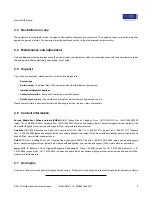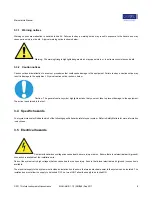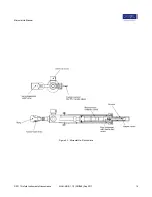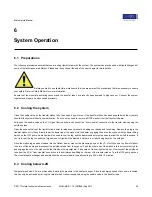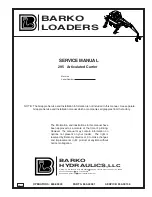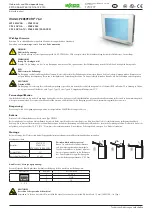
Microstat He Manual
5.3
Evacuating the outer vacuum chamber (OVC)
The OVC has to be pumped to high vacuum to make sure that it gives the required thermal insulation. When the system is new, all of
the materials inside the vacuum space are likely to outgas quickly, and this will affect the quality of the vacuum. This does not mean that
the system is leaking, just that the new materials are being cleaned by the vacuum. The OVC should be pumped thoroughly before each
cooldown, especially when the cryostat is new.
Connect the pumping system to the cryostat vacuum valve on the top plate of the cryostat. We recommend that you use a turbo-molecular
pump, backed by a rotary pump, and fitted with a cold trap which helps the system to pump water vapour. If the system is badly contami-
nated with water vapour, the gas ballast facility on the rotary pump should be used.
5.4
Evacuating the transfer tube
The transfer tube vacuum space has a separate vacuum valve, similar to that on the cryostat, and the high vacuum pumping system can
be connected to it directly.
The transfer tube vacuum space has a separate evacuation valve similar to that on the cryostat, and the high vacuum pumping system
can be connected to it directly.
5.5
Exhaust gas connections
During standard operation, a piece of polythene tube is used to connect the exhaust port on the cryostat or transfer tube to the VC-U
gas flow controller. The other connections should be made as shown in the figure above. The exhaust line from the VC-U can either be
connected to a Helium recovery system or vented to the atmosphere.
© 2017 Oxford Instruments Nanoscience
MAN-MHE-1.1.0 (28ff3d8) Sep 2017
17



